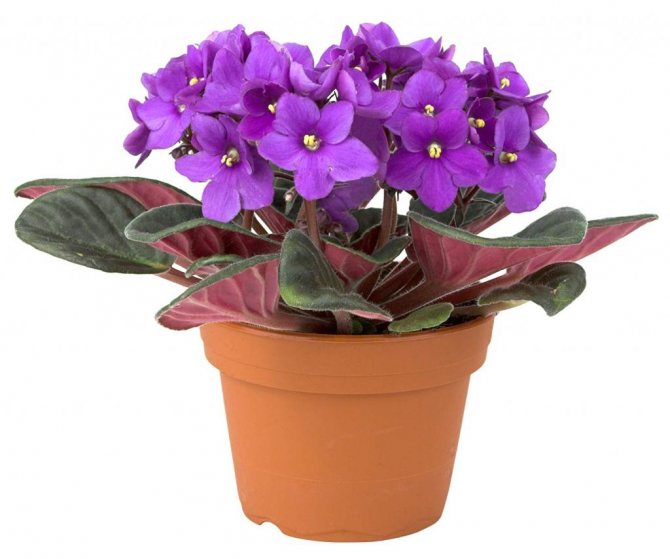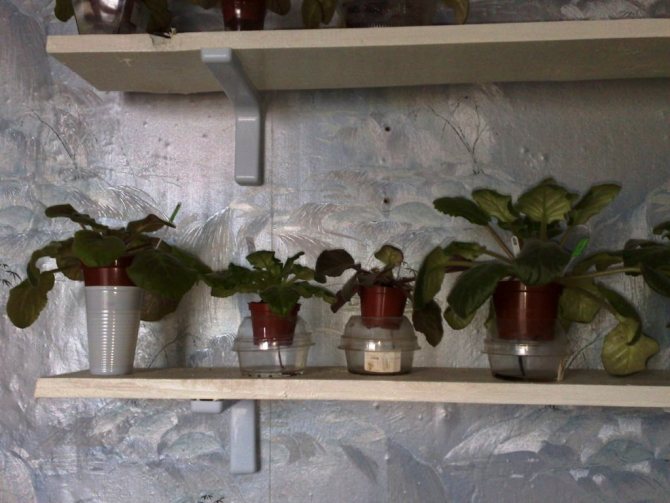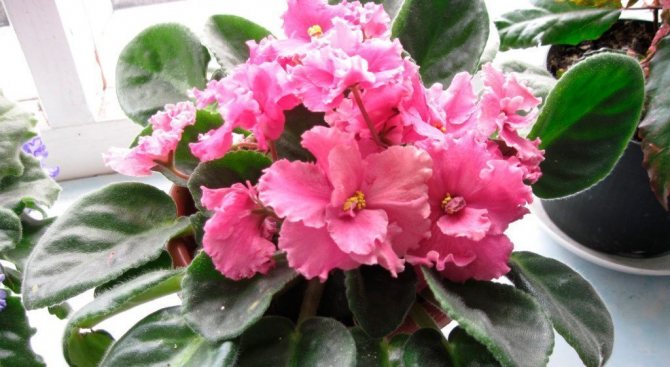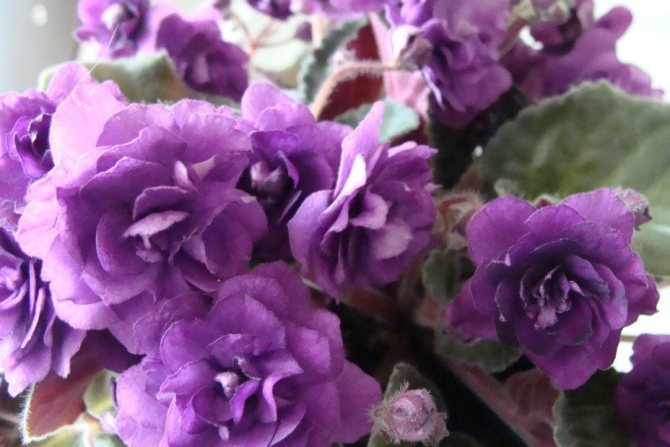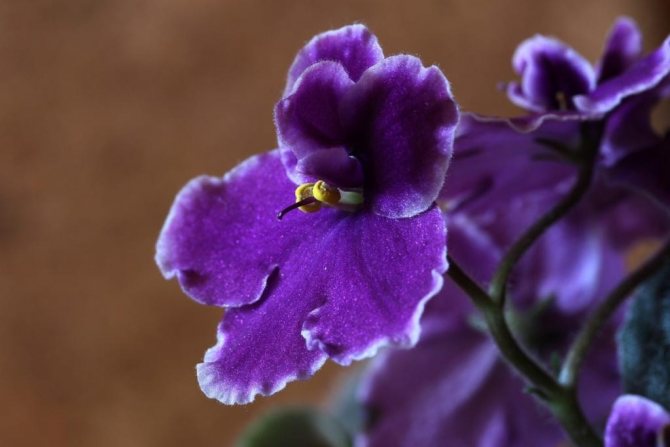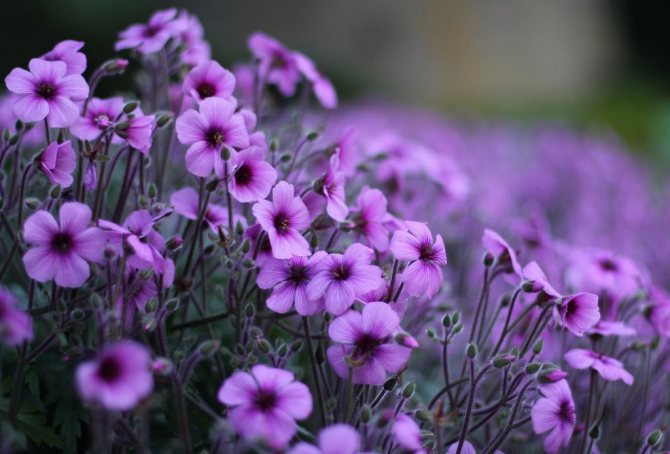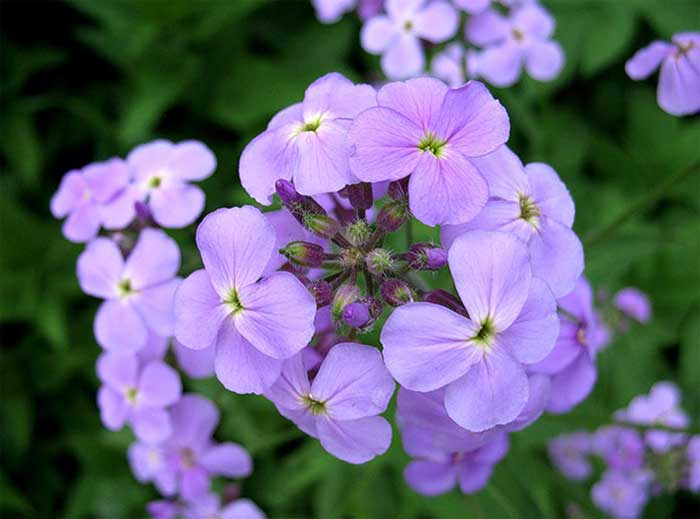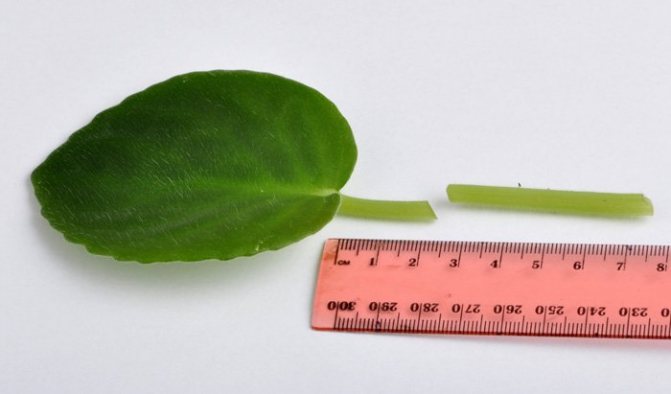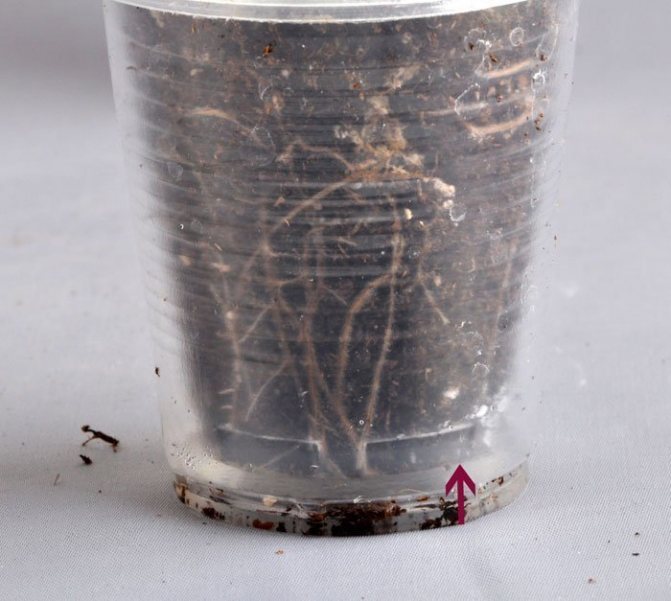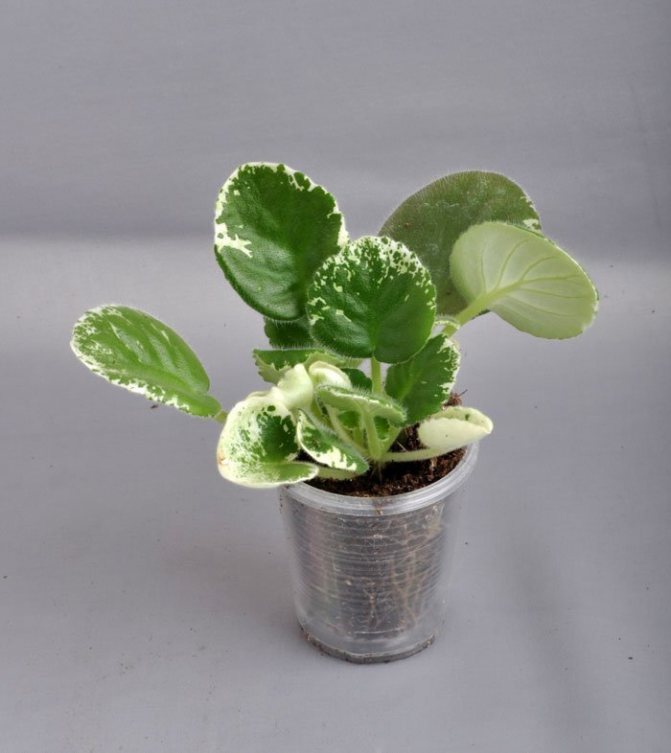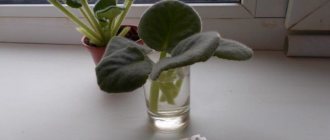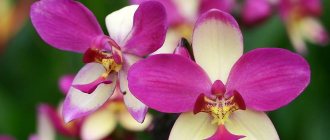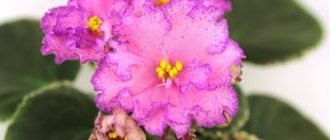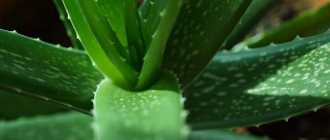There are times when your favorite flowers need to be left for a long period or there is simply not enough time for constant and laborious watering.
In such situations, many flower growers, both amateurs and professionals, stop at the wick irrigation method.
Wick irrigation is the simplest and, perhaps,
one of the most reliable methods, allowing to reduce the time of caring for violets and extend their autonomous life. In this article, we will reveal to you the secrets of such watering.
Errors made in the preparation or implementation of this procedure are very can adversely affect the health of the flower... With improper care, this method can lead to rotting or, conversely, the complete drying of the plant. Let's take a closer look at what it is and how to use this method correctly.
How to make wick watering of violets?
The wick irrigation technology is very simple, and the principle of operation is clear to everyone. Through the wick, the plant takes for itself from the container required amount of moisture... Many growers do not understand what a violet looks like on a wick. How it looks can be seen in the photo below.
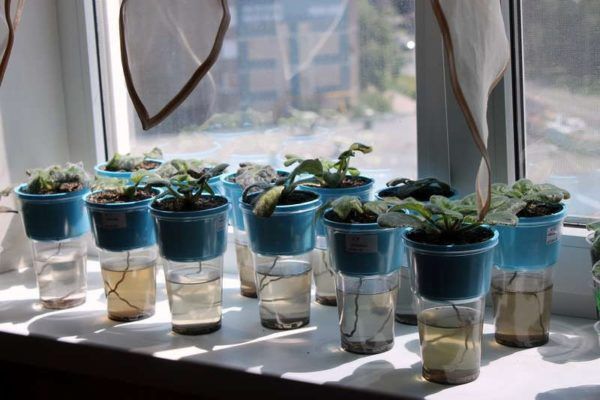
Wick watering is considered very simple.
The water container is located under the pot and the water edge does not come into contact with it. And the cord, being in close proximity to the roots of the violet with one end and sinking to the bottom of the vessel with water with the other, transfers moisture between them.
When all the conditions of the irrigation system equipment are fulfilled and it is adjusted to the individual conditions in the room, the plant takes exactly as much moisture as it needs. Violets are one of the few plants that can exist on wick irrigation from a small seedling to adulthood, as well as the rest of his life.
This watering method has its pros and cons. Let's find out more about them.
Benefits
The transition to new methods of caring for violets is always about finding the benefits of this very innovation. The wick irrigation system has many advantages, and they are not limited to the convenience of the grower. The main advantages (subject to all the nuances) you can call:
- Simplification of plant care and reducing the time for manipulations associated with watering. And also the maximum increase in flower autonomy from several days to 2-3 weeks;
- Violets take just as much water as they need, they do not suffer from overflows and droughts that can occur with conventional watering. The period of especially difficult watering is the transition between the seasons, it is then that overflow easily becomes overdrying and vice versa;
- By bringing the fertilizer level to the most suitable level, you can get the most abundant, long-lasting and bright bloom... The size of the flowers increases slightly, their number grows noticeably, and the growth of new peduncles lasts longer and better;
- During the rearing of offspring, young plants on wick irrigation less susceptible to changes in temperature and humidity, which reduces the number of rotten leaf cuttings and babies. Constantly maintained humidity accelerates the development of young animals, and the growth period before the first flowering is reduced by 2-3 times;
- Wick irrigation eliminates the need additional air humidification... The water evaporated from the containers provides optimal moisture around the plant, which guarantees excellent conditions for the growth and development of the rosette;


Wick irrigation excludes additional air humidification. - Given the constant access to nutrients that do not come from the substrate, you can reduce the size of the pots... If the classical root system should occupy 1/3 of the total volume, then with wick irrigation - much more, up to ½. The root system of the violet should occupy the floor of the pot (1/2), and not a third (1/3), respectively, if the root system is 2 cm in diameter (approximately), the pot will be 6 cm in normal watering, and 4 cm in the wick. It turns out that the flowerpot is reduced by a third. This reduction of the earthy coma makes the outlets more compact and evenly developed, which is especially noticeable and useful for mini varieties.
Advice! Violets, planted with the expectation of wick watering, can be placed on stands and use the classic methods. This helps to keep the flowers alive while traveling. When leaving, you can put the pot on the container and the plant will not disappear during your absence, but, being at home, return it to the stand and take care of it according to the usual schedule.
A number of advantages of this type of irrigation attracts more and more flower growers, especially those with a large number of varieties. Growing on a wick is useful for those people who often fly away on business trips.
disadvantages
Like any method, wick irrigation has its drawbacks... Usually they are associated with an incorrectly selected soil or wick; after the first unsuccessful experience, many growers abandon the method, without even trying to adjust some of the components to their conditions.
Absolutely all varieties of violets perfectly tolerate wick irrigation at home, individual problems do not depend on a specific variety, but on an individual. Main disadvantages and remedies:
- Root decay from waterlogging is possible - this problem often arises with ordinary watering. To eliminate it, it is enough to reduce the thickness or length of the wick, in some cases, reconsider the proportion of the constituents in the soil;
- The appearance of sciarids (mushroom gnats) - since the main food of their larvae is organic residues, they appear much more often with a conventional soil mixture than with a substrate for wick irrigation, but if they appear, you need to revise the composition of the soil;
- Increasing the outlet and the disproportionality of the plant - using pots of the same size as for regular watering will lead to this result. For wick irrigation, the size of the pot should be 1.5-2 times smaller;
- The water in the containers is cooled and flows to the roots cold, which bad for the roots - with normal watering, a wet earthy clod can also cool down. If the window sill is cold, it is better to remove the plants completely to another place, or at least put them on stands along with the wick;
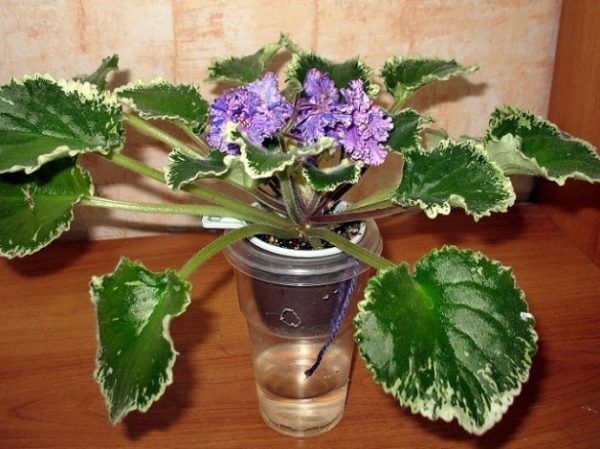

Wick irrigation has several minor disadvantages. - Need remake shelving and shelves for new sizes;
- Water does not flow through the wick - this is possible if the wick is not wet or is chosen incorrectly.
Important! When arranging wick irrigation, it is necessary not only to observe methods tested by others, but also to adjust some points to individual conditions.
Components for its organization
When preparing to test a new watering method, it is very important to know in advance prepare all the necessary materials... Before transferring the first violet to wick irrigation, it is important to familiarize yourself with the nuances of choosing all the components:
- Soil;
- Wick;
- Capacities.
Soil characteristics
Violets even with the usual watering method need a very light earth, therefore, add to the mixture:
- Sand;
- Perlite;
- And vermiculite;
- As well as other components that increase friability.
For wick irrigation, the substrate should have been even lighter. The classic version can be considered peat with pearlite in a ratio of 1/1.
Individually primed selected depending on growing conditions:
- If the climate is more humid, then perlite or very fine expanded clay is used;
- And in dry regions, perlite is partially replaced by vermiculite, and peat is mixed with sphagnum moss or coconut fiber.
Vermiculite, moss and coconut retain moistureso you need to be very careful when adding them.
Wick
What to make a wick for watering? A variety of materials are used for the wick: from natural threads to nylon tights, and each grower has his own favorite material.
Natural cords conduct water well, but at the same time quickly deterioratebut some growers prefer them. In the process of use, they rot, but given the frequency of transplanting every six months (which is used by professional growers to achieve the necessary flowering), and with their regular replacement, they are quite suitable.
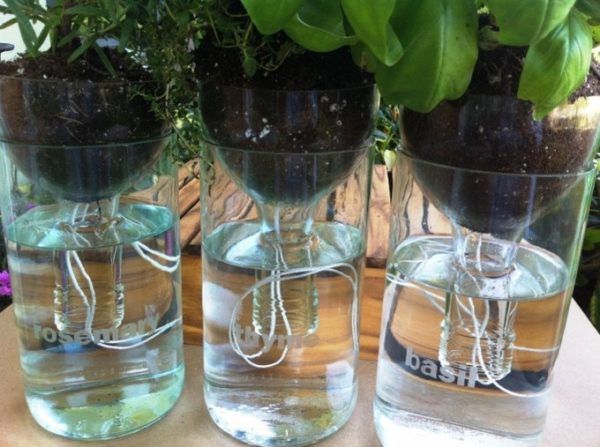

For watering, you can use wicks of different materials.
Synthetic options are recommended for those who does not transplant their darlings very often... Such wicks do not deteriorate and serve for a very long time. But, using this option, it is important to choose the diameter of the cord and its composition, depending on the regional characteristics and conditions in the room.
How to make a cord for wick irrigation?
The most universal for all regions can be considered homemade cord from nylon tights... To obtain a wick, they are cut into strips and used. The width of the stripes depends on:
- Violet varieties;
- Pot size;
- And the conditions of detention.
Tights are cut across and then each cord is cut to obtain a single cord.
Pots and containers
When choosing containers for planting and watering a plant, you need to choose one for planting a flower and the second for water. Violet pots should be well-drained and sized to suit the size of the root system, and the rest is up to you.
Given the specifics of the growing method, the pot can be taken the simplest, because it usually stands inside the container for irrigation. And only if the container is covered, you should think about more interesting options.
Water containers can be completely different, suitable for this:
- Disposable cups;
- Glass jars;
- Plastic containers with holes punched under the wick in the lids;
- And even cut plastic bottles.
Everyone chooses for himself the most convenient option. It is important that the pot does not fall through or come into contact with the water. There are also tanks for wick irrigation on sale, their system coincides with the standard one, but they look more aesthetically pleasing.
Advice! Many people ennoble their windowsills, painting and decorating containers at their own discretion. Thus, an excellent container can be made from a plastic bottle, which, in terms of external parameters, will be better than many.
What are the best containers to use?
It is believed that the larger the pot, the better. However, do not forget, first of all, about the aesthetics: a small flowering plant will look ridiculous in a large pot. Also, the root system of the flower develops on the surface, and the lower processes of the root die off, this is due to the fact that there is more oxygen and nutrients on the surface. It so happened that in nature, henoplia grow on rocky surfaces, and the root does not grow deeply.
As for the dimensions of the pot, then:
- For the largest representatives of violets, a 9x9 cm pot is suitable.
- The average container is 7x7.
- For the smallest, or miniature varieties, the pot should be no more than 5x5.
Important! Choosing a large pot, you can face the souring of the earth, which will not be covered by the root system, and instead of flowers, abundant foliage will grow.
For what other reasons the violet does not bloom and what to do with it, you will learn here.
The pot material also plays an important role in the cultivation of violets.
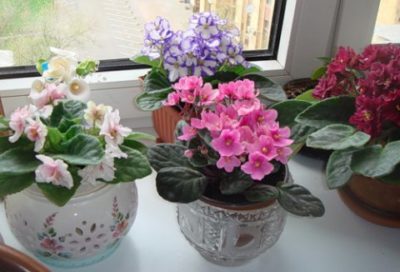

Various outlets can offer you a large selection of pots, each with their own advantages and disadvantages:
- Plastic pots not expensive and durable, their flexibility greatly simplifies plant transplantation. The main disadvantage is that, in such a pot, the violet will suffer from a lack of oxygen.
- Ceramic tableware there are two types - glazed or not. Treated pots always look beautiful, but because of the glaze they do not allow oxygen to pass through, and the other type, although it allows oxygen to pass through well, quickly loses its appearance, and as a result, it can crack altogether. The severity of ceramic pots can also be attributed to disadvantages.
Beauty and benefits for a flower can be combined, just put a flower, planted in an ugly pot without glazing, inside a beautiful and bright ceramic pot.
The same method can be applied to any other container. Your beauty will look unusual and beautiful, put in a pot in any jar, bottle or even in an original large mug. Individual decorative elements can be perfectly combined with the color and shape of the violet. For this, different types of this plant are suitable.
Transfer procedure
Wondering how to plant a violet with a wick and hold it right? When all preparations are over and all information has been collected, it's time to transplant plants.
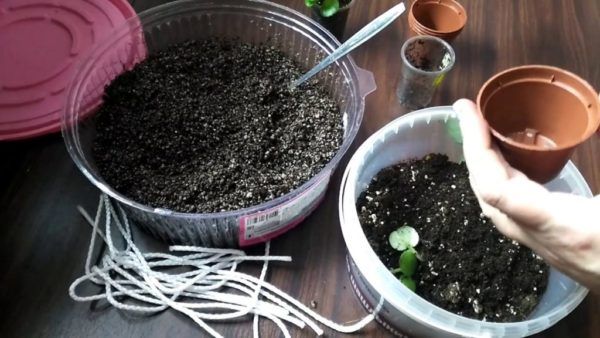

All materials must be prepared for transplantation.
Usually, the first experience of wick irrigation is acquired on adults, preferably on those that are not in one copy.
Adult plant
You need to know how to put an adult plant on the wick. The step-by-step process of transplanting an adult violet to wick irrigation differs little from the usual one, the main thing is to place the wick correctly:
- Through a pre-made or finished hole the wick is stretched;
- A little substrate is poured into the bottom of the pot. The thickness of the layer depends on the size;
- Wick laid on the first layer ring and sprinkle with a small layer of soil;
- Remove the rosette from the old pot and shake off the roots well;
- Place the violet in a new flowerpot, add the substrate and tamp a little;
- To make the wick work, you need it soak: for this, the pot must be placed on a stand and the entire substrate, together with the wick, must be soaked under the leaves;
- The water container is filled to the required level and the violet is set.
In addition, you need to know when to transplant a violet correctly.
Babies and reproduction
Wick irrigation can also be used for reproduction. Transferring the outlet to this type of watering is possible from the smallest children, the main thing is to choose the right pot and the length of the wick, and the transplanting process is similar to that of an adult plant.
If reproduction is initially carried out on a wick, you need to know how to properly plant the cutting:
- Instead of a substrate, use sphagnum moss;
- The moss is placed on the bottom of the container, then the wick and again the moss;
- A leaf stalk or a baby without roots is placed in a container with moss, previously dipping in root;
- Soak everything, it's important wet the wick well;
- Put the system on a container with water;
- After the appearance of roots and the formation of children, which should get stronger in this state, their transplanted into small pots, using a special primer for violets.
After transplanting, the flower needs careful care.
Follow-up care
The subsequent care of the violet after planting does not differ from usual. The soil must be of the required consistency and always moist. Young sprouts, like adults, should be kept warm with sufficient sunlight. It is recommended to periodically saturate the soil with special fertilizers.
Read about transplanting a plant and its subsequent care in this article, and how to properly grow and care for this beautiful flower at home, you will learn here.
Florist reviews
Oksana. “Violets, transferred to wick irrigation, have changed. The flowers have become noticeably larger, and the number of peduncles amazes the wildest wishes. At the first attempts, I had to suffer a little with the selection of the optimal soil and the size of the wick, but even the loss of one individual did not stop, because the rest showed all the best results. For six months, all adult plants and starters have been gradually transferred to the wick, the next step will be children and reproduction on the wick. "
Nikolay. “An attempt to transfer violets to the wick irrigation method was crowned with failure, one plant died and it was decided not to take any more risks.


Sometimes wick watering can lead to rotting of the roots of violets.
Roots rotted, the earthy ball was constantly too wet, perhaps the wrong earth or wick was chosen, but the desire to take risks in finding the right choice of ingredients was gone. "
Natalia. “For several years now, all the violets from the collection have been living well on wick irrigation. With an amount of 300 varieties, this is the only salvation, otherwise you would have to live in a greenhouse. Small children and starters stand in common, large containers with holes for wicks. Adults - in individual containers made from plastic bottles. The main discovery was a thin layer of sintepon drainage, the soil does not wake up and there is no excess moisture. "
Possible diseases
Violet refers to capricious plants that are prone to various diseases. The main dangers that can be met when growing violets are as follows:
- Rotting socket - occurs when the growing conditions are violated (unsuitable soil, excess moisture, watering with cold water and too large a pot).
- Powdery mildew parasite - looks like a white bloom on leaves and stems. The appearance of these parasites is facilitated by a lack of lighting and low air temperatures.
- Late blight - a fungus that affects the root system. Late blight is dangerous because it remains in the soil, therefore, to treat the flower, it is necessary to completely replace the soil and rinse the root under running water.
- Aphids and ticks they also spoil the aesthetic appearance of the plant and can lead to its death. Treatment takes place with special solutions purchased in stores.
We wrote in more detail about all the diseases and pests of the violet here.
Violet is a flower that is whimsical in its care, but it will not be difficult for experienced flower growers to grow and propagate henoplia. The plant fits well into any interior and can be a wonderful gift for family and friends.
If you find an error, please select a piece of text and press Ctrl + Enter.
Top dressing
Many growers ask the question: how to feed violets on a wick? Depending on the country, region and availability in stores, each grower has its own proven fertilizers.
You can choose the right fertilizer based on the needs and composition, it can be considered using the example of Etisso fertilizers:
- Etisso Bluhpflanzen Vital-Dunger - fertilizer for decorative flowering plants, used for adult flowering individuals:
- Nitrogen - 3.8%;
- Phosphates - 7.6%;
- Potassium oxide - 7.5%.
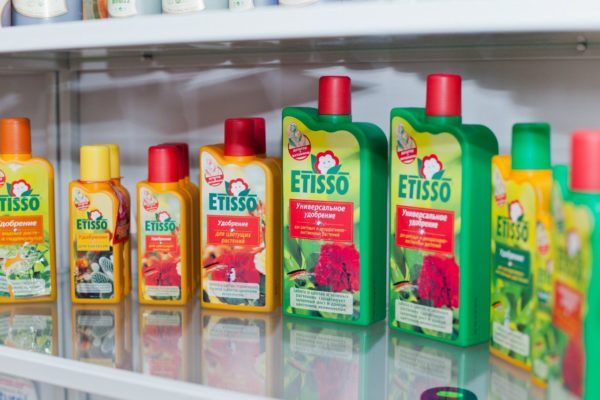

Etisso Bluhpflanzen Vital-Dunger. - Etisso Grunpflanzen Vital-Dunger - fertilizer for ornamental deciduous plants, for children and starters who are gaining greenery:
- Nitrogen - 7.1%;
- Phosphates - 3.1%;
- Potassium oxide - 4.2%.
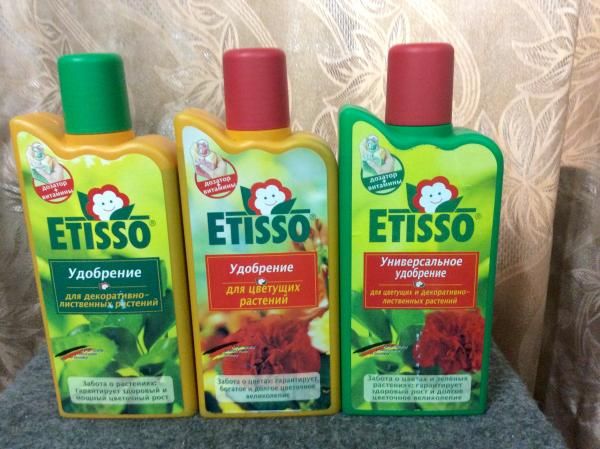

Etisso Grunpflanzen Vital-Dunger. - Etisso Universal Vital-Dunger - universal liquid fertilizer for green and flowering indoor and balcony flowers, suitable at all stages of a flower's life:
- Nitrogen - 6%;
- Phosphates - 5%;
- Potassium oxide - 6%.
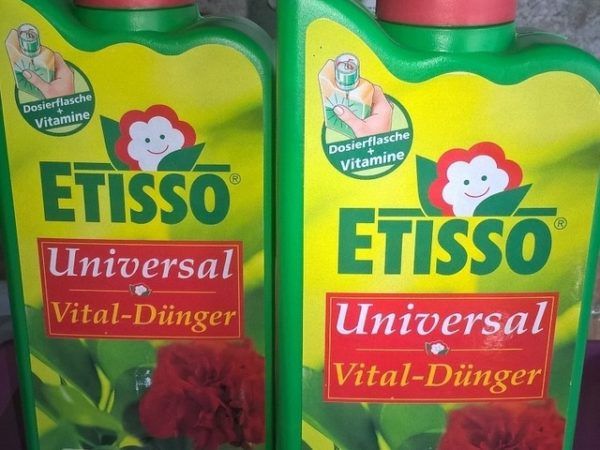

Etisso Universal Vital-Dunger.
Important! The composition of the fertilizer will not necessarily match exactly, but the approximate ratio of substances is clearly visible in the example.
Concentration and frequency of fertilizing with wick irrigation radically different... Experienced flower growers recommend using a concentration 2 times less than that recommended by the manufacturer for ordinary watering, and 7-10 times less for wick watering.


There are many ways to water violets.
In this case, the water should always be fertilized. Such a figure did not arise out of thin air, it can be easily calculated:
- Classic watering has two feeding options:
- The concentration is 2 times less than the recommended one, and feeding is carried out every 2-3 weeks;
- Or water is always with top dressing, but the concentration is then 7-10 times less - since irrigation is carried out about every other day and the amount of fertilizer per irrigation in the first method is divided into 7-10 irrigations.
- Wick irrigation also possible in two versions:
- Constant watering with fertilizer and the concentration is 7-10 times less;
- Alternation of fertilizer and regular watering - the amount of water is poured into the container the same at each watering, but fertilizer is added every other time, then its concentration is 4-5 times less than the recommended one.
What to look for when choosing a pot?
You need to understand what pots are needed for violets, otherwise there is a possibility of buying an unsuitable container. Growing up in an uncomfortable flowerpot, the culture can start to hurt and stop blooming. There is even a risk of death. The most important parameters when choosing a container are its size and material of manufacture. You can read the article: Garden and home gerbera flower - recommendations for growing.
The size and size of the container


First you need to decide on the value. The roots of Saintpaulia do not grow in depth, but along the surface of an earthen coma. Even in nature, the roots do not go deep into the soil. This is due to the proximity to nutrients, air and light. Therefore, the culture does not need a deep capacity.
When choosing the size of a violet pot, it is important to consider the size of the plant. For example, a container with a height of 9 centimeters is suitable for an adult large flower. In this case, the diameter of the pot should always be equal to the height, that is, it should also be 9 centimeters. It happens that a flower grows so much that it ceases to fit in such a flowerpot. But you should not look for a larger container. It is enough just to shake off some of the soil and transplant the culture into a container of the same size. Larger varieties can kill the plant.
But when growing medium-sized plants, it is better to give preference to a container of 7x7 centimeters.
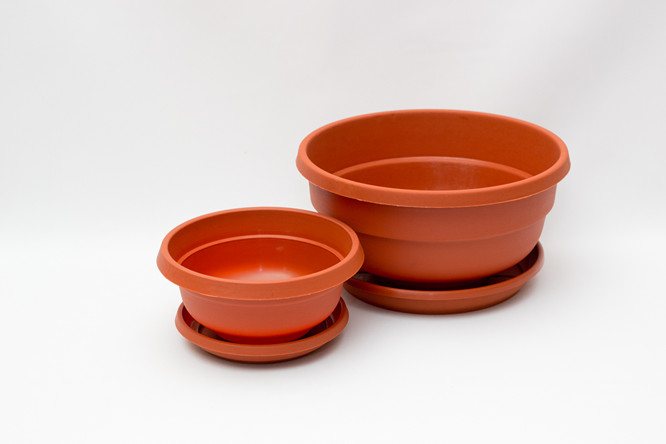

Ideal will be pots for mini-violets or young Saintpaulias, the diameter and height of which are equal to 5 centimeters.
If you plant violets in large pots, they will grow vigorously leaves. But there will be very few flowers. You should not expect flowering within two years. In addition, the soil that is not entwined by the roots turns sour and deteriorates. Various insect pests begin to grow in it, and fungal infections develop. In this case, it is often necessary to destroy the culture. A spacious container is justified only in the case of growing a mother saintpaulia for further seedlings and selection.
An ideal pot should be three times smaller than the diameter of a Saintpaulia rosette. Only in such tight conditions will the violet feel comfortable. So, it will delight you with beautiful flowers.
Container material
When the volume of the pot is selected, it is determined with the material. On the shelves of the store, there is a wide selection of products made using different raw materials. They differ not only in appearance, but also have different effects on the plant.
The following options are commonly used:
- Ceramics. There are ceramic pots doused with glaze and not drenched. The first ones look much prettier. However, they do not allow air to pass through. And it is almost impossible to punch a hole. As for the non-drenched options, over time their appearance deteriorates, the color changes, drips of fluids and the intake of salts become noticeable. Quite often the vase falls apart in parts. Although it is in ceramics that Saintpaulia develops and blooms best.Since the pottery is heavy, it is important to choose a location for the plant. A thin glass shelf will not work in this case.
- Plastic. The advantages of such a container include lightness, durability and simplicity. He's pretty flexible. Therefore, the transshipment procedure is easier. But plastic does not allow air to pass through at all. And this is a disadvantage for the development of a good root system. This problem can be easily solved by making drain holes. So the roots will not rot, the soil will not turn sour.
- Plastic. On store shelves, you can see multi-colored plastic pots for violets that look very bright and pretty. Aesthetically, they are, of course, good. But you shouldn't choose them. After all, aniline mixtures are often used for painting them.


And they tend to poison the root zone of the plant. - Clay. These violet flower pots are considered a good choice. In a clay pot, the culture grows remarkably, pleases with lush flowering. This is due to the fact that the container is made of natural material, it is good for moisture and air. Thanks to this, the root system does not rot. The culture is much less likely to be attacked by pests and various kinds of ailments. True, clay pots for violets cannot be called durable. They break down pretty quickly. They need to be carefully looked after, washed and boiled. Clay containers are heavy. Therefore, it is not recommended to put it on fragile shelves, glass racks. Also, the clay container gets very hot in the sun. And this leads to the rapid drying up of the earth. Therefore, the violet needs more frequent watering.
Experienced gardeners claim that the best Saintpaulia pots are those made from plastic or clay. Sometimes, transparent plastic cups and cut-off bottles are used to grow Saintpaulias. Such containers look very unattractive. For camouflage use beautiful larger pots.
How not to fill the flower?
It is necessary to know whether the locking of the violets depends on the thickness of the wick. The main danger and problem with wick irrigation waterlogging of the soil, which leads to rotting and death of the violet. To exclude such an outcome, it is important to choose the right substrate, the most reliable is a mixture of perlite with peat.
Another important component is the wick:
- The thickness of the wick must match the size of the rosette;
- And the length should be optimal and fit in a circle inside the pot, reach the bottom of the container and lie at the bottom for 1-2 cm.
Correctly organized wick irrigation does not allow the problem of waterlogging.
What to remember when planting a flower in a pot
If you were presented with an adult violet and you decided to propagate it, no problem, because your plant already has many leaves. But choose not the upper deciduous layer (the leaves are small and not very strong), and not the lower one (but on the contrary, the leaves are too old for rooting).
The best option is the leaves of the middle row. They managed to accumulate enough nutrients in order to exist separately from the mother bush.
Sometimes we prune the bushes, removing yellowed, burnt or diseased leaves, and we see that they are large and juicy. It is a pity to throw them away, so many are trying to root them.
Unfortunately, defective leaves die before they can grow roots. So for reproduction, choose only healthy "offspring" of no sick Saintpaulia.
Planting Saintpaulias
The leaf stalk is placed in a glass of water for 2 weeks. When roots grow here, it means that the violet "asks" to be buried in the ground. But do not rush - the length of the roots should reach at least 1.5 cm.
When planting in a pot, first lay the drainage (expanded clay, pieces of polystyrene), then pour earth here, plant a stalk, compact the soil a little and water it.After that, it is better to put a transparent bag on the pot (you can put an inverted jar on it) - such a greenhouse will help the young violet to take root faster.
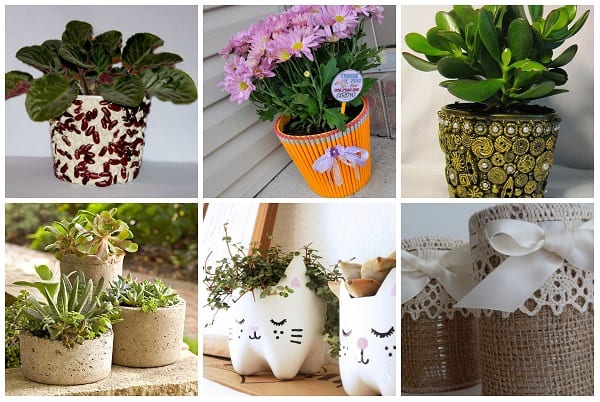

And if the pot is old, first process it, removing all the salt deposited on the walls. For this:
- Prepare a hot soapy solution, place your flower "house" in it.
- When saline streaks are soaked, scrape them off with a stiff washcloth or brush.
- After that, soak the pot for a day in a disinfectant (for example, in a purple solution of potassium permanganate).
When buying a pot, many people immediately buy a bag of soil. If pure peat is suitable for wick irrigation, then a more interesting mixture is needed for an ordinary pot. What should be its composition and which manufacturers of finished products are considered the best, this video will tell:
Features of care in the winter
During the winter period conditions in the house are changing, in insulated and well-heated rooms, the air remains warm, but becomes dry. And in houses where the heating is not so fine-tuned or there is no insulation, it becomes damp and cold on the windowsills.
In the first case, wick irrigation provides additional moisture and no change in care not necessary. And in the second, you need to either remove the plants from cold windows, or completely rearrange them to the usual type of watering, while the wick remains and with the onset of heat, the pot safely returns to its place.
Is it allowed to grow several Saintpaulias in one pot?


Gardeners are often interested in whether different varieties of violets can grow in the same pot. In principle, this is permissible. The main thing is that the sizes of the outlet of the varieties are approximately the same. However, some flower growers advise against planting crops in one flowerpot. After all, if you plan to cultivate two violets in a pot, then you will need a spacious one to choose a container. And Saintpaulia prefers tightness. In a large container, all the energy of the violets will go to the development of the root system. As a result, both plants will not bloom.
The violet looks very delicate and beautiful. It can often be found on the windowsills of city apartments and private houses. But to get a good, symmetrical plant with abundant flowering, you need to find a pot that is perfect in size and made from good material. It is realistic to make a flowerpot and independently from clay, gypsum or weave from plant twigs. See the article: Indoor ficus - popular types and main rules for home care.
Florists know that attention to detail is essential to the successful cultivation of any plant, such as soil selection, irrigation method, and growing container. There are plants that take root well in any pot and soil, and there are whimsical flowers in this matter. The latter include indoor violets. In this article, we will look at which violet pots to look for in order to grow a beautiful flowering plant.


The violet pot should be three times the diameter of the rosette.
Nuances and questions from readers
Often, with wick watering, violet leaves may turn yellow or even rot, this is a consequence of waterlogging or overdrying of an earthen coma, both options are dangerous for the flower. It is important to find and fix the problem in time.
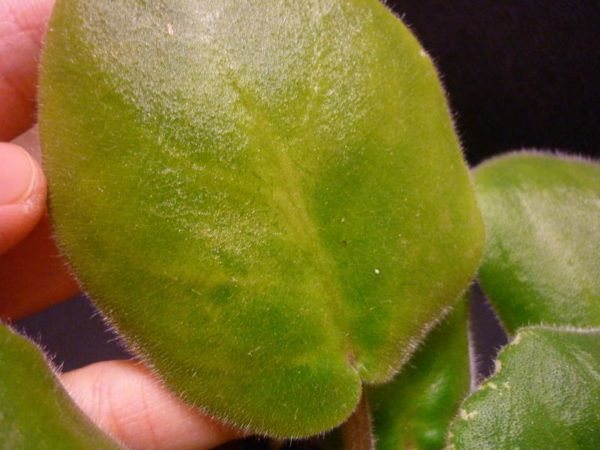

Violet leaves may turn yellow due to waterlogging.
Overmoistening can occur due to the substrate or wick, and overdrying - only due to a cord that is too thin, wet or improperly selected.
Caution! The use of vermiculite instead of perlite can lead to waterlogging, because it retains water in itself.
The cost
The price of pots depends on the size and material. So, plastic ones cost from 50 rubles, ceramic - from 150 rubles.
In order for the violet to bloom magnificently and delight the eye, it is important to choose not only the right pot, but also the method of watering.
Violets are houseplants that
in terms of the complexity of cultivation, it can be classified as medium. Whether or not an attempt to grow this flower is successful depends on many factors.
There are many florists who have it disappear quite quickly, but there are also those who consider them the simplest, even for novice florists. For a successful try it is important to follow all the recommendations of experienced florists.
Choosing the right container for growing is far from the last place in the care. If the flower pot is wrong, the plant may die and inexperienced growers will not even understand the cause of the disease and death. That is why in this article we analyze, what kind of pot is good for saintpaulias.
Transfer
«Moving "to a new house occurs for several reasons:
- if the plant is large for the vessel in which it was placed;
- if the soil has changed its composition and the plant begins to disappear;
- and if the stem is constantly lethargic and does not show any vital activity;
- Saintpaulias are often transplanted as a preventive measure every 2-3 years.
Let's take a closer look at the transplant process.
- If, due to a flower disease, or simply for aesthetic reasons (so that there is no bare stem), you decide to transplant it, then you need to know a few basic rules. They will help keep the plant alive.
- Transplanting into ceramic pots (it is better not to use others) is carried out only in the spring, and early. In winter, you cannot replant, even if the temperature is high - sunlight is important here, not heat.
- The earthen lump should be of medium humidity, that is, not dry (otherwise the roots will be damaged) and not too wet.
- If before that the inflorescences grew in plastic cups or temporary vessels, they can not be pulled out of them, but simply cut the vessel itself with a sharp knife, after which the earth will crumble and the plant will become bare. Thus, there is no risk of damage to the root system.
- In the new place, there should be high-quality drainage and without it it is impossible to transplant even for a while, since the flower will need a lot of moisture and abundant watering. Drainage should be high, up to 1/3 of the pot, if growing an adult flower.
- The depth at which you want to place the root system, select separately in each case. The best option is considered when the petioles of the lower leaves lightly touch the soil.
A bit of history
If you're unsure where to start, read this section. It is for those who have just started dealing with violets. They will be interested to know that plants from the Viola genus belong to the Violet family. They are not at all related to indoor flowers, which belong to the genus Saintpaulia. They are called uzumbar violets.
In the wild, these houseplants are found in the highlands of the eastern regions of the African continent. On the map of modern Africa, you are unlikely to find a region with such a name. But at the end of the 19th and beginning of the 20th, the Uzumbar District was located on the territory of modern Rwanda, Kenya and Tanzania. And he was a German colony.
- The commandant of the East African lands, Walter Saint-Paul, while walking, drew attention to a previously unknown plant, the leaves and flowers of which grew almost from the middle of the stone. The commandant collected the seeds and sent them to Germany to his father, who was not the last person in the world of botany. Another German botanist raised a flower from seeds that he described and named Saintpaulia Violet. It was from this first uzumbar violet that Europeans began to love this flower in 1893, when visitors of the famous flower festival in Ghent “Ghent Florals” saw it.
Worldwide recognition came to violets in 1927, when the flower was brought to the United States. Numerous associations of violet lovers were formed here.
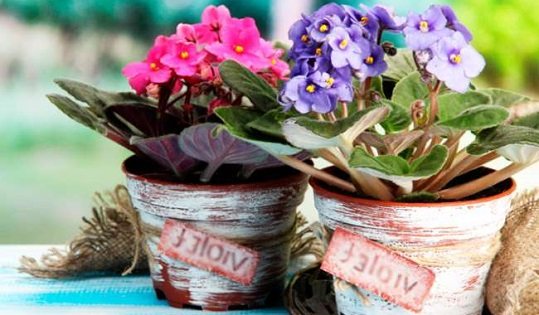

In the first 20 years, botanists bred more than a hundred varieties of this plant. Now in the world there are tens of thousands of varieties and hybrid forms. More than 2 thousand of them are of domestic origin.It turns out that even beautiful varietal violets reproduce very easily.
Planting shoots
This method of breeding is chosen when they want to preserve and subsequently improve varietal characteristics: the brightness of flowers, the saturation of greenery, size or climatic characteristics. In this case, the lateral processes are isolated. They are located on the sides of the main violet bush. Cut off the pieces with a sharp knife so that the cut is smooth. It is important to remember that closed buds are never used for planting the shoots. They are unable to take root and will fade the next day.
All inflorescences are planted in one container at a distance of several centimeters from each other, covered with a film and left until the processes are fully strengthened. After the flowers come into effect, they are planted in separate pots.
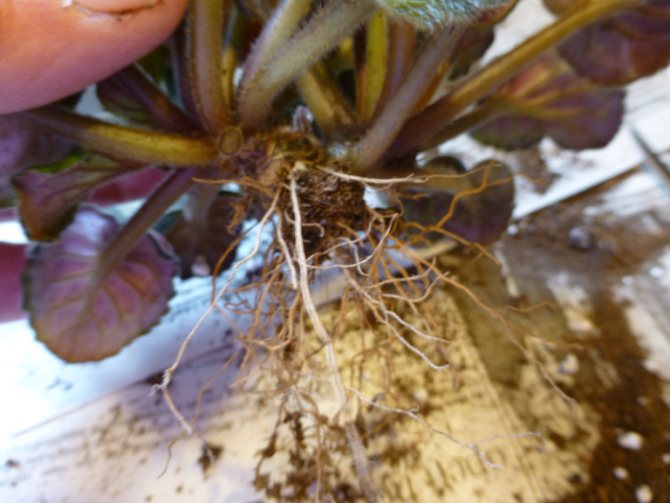

Planting Saintpaulia - choose the "correct" leaf
The subsequent survival rate of Saintpaulia and its further growth will directly depend on how correctly you can choose a leaf for reproduction. Moreover, the quality of the color, more precisely, the size of the bud and the color of the petals, depends on the planting material. It is necessary to choose only healthy leaves, mainly from the third row (you can also take from the second, if the plant is not too "old"). Pay special attention to possible plant diseases, including spotting, powdery mildew and pests - often the leaf plate becomes a habitat for fungi or parasites.
As for the size, it is worth choosing only dense, medium-sized leaves, since too small do not have enough minerals and organic matter for a good "start".
Color plays an important role in the selection. As you know, the main indicator of a large amount of accumulated chlorophyll is the dark green color of the plate. If they are yellowed, then there is nothing to hope for an excellent bush - it mostly dies before the start of rooting. Even if this does not happen and some activity is manifested, then there may not be new children - the bush will remain dormant for a long time.
Separating multiple spines
If you see that the cuttings have daughter processes, then it's time to separate them. Each outlet must be separated in such a way that there are several strings with a spine and a couple of leaves.
If you plan to plant separate outlets, separate them very carefully. To do this, you need to moisten the soil in which they are located as much as possible. It is better to pull the plants out with the ground and then carefully peel the roots. The main thing is not to rush and not damage the root system.
Is it possible to make them with your own hands
Many experienced gardeners do not trust purchased slides due to the large number of low-quality products. You can make a container for growing flowers yourself.
For this, gypsum, cement, wood are suitable. Clay and flower rods can be distinguished from materials that are difficult to process.
The clay pot needs to be burned in a special oven, and in order to weave a container from rods, you need to have additional skills.
Varietal violets, for example "Chimera" and "Raisin", are especially demanding on capacity and soil. For them, we recommend that you immediately purchase a good ready-made soil.
Suitable containers
If you are worried about the question of what size pots to plant violets in, then the answer is this. The pots should be small, not very deep, always with a drainage system. For example, if you took a plastic container, then punch a few holes with a diameter of half a millimeter at the bottom. If you prefer ceramic pots, then the drainage system can be built from foam and sand. Simply chop the styrofoam into small pieces, sprinkle with sand and lay it on the bottom about one to two centimeters high.
